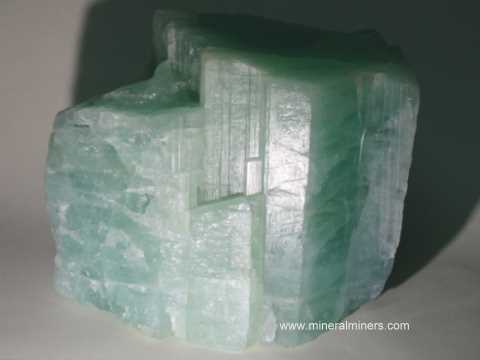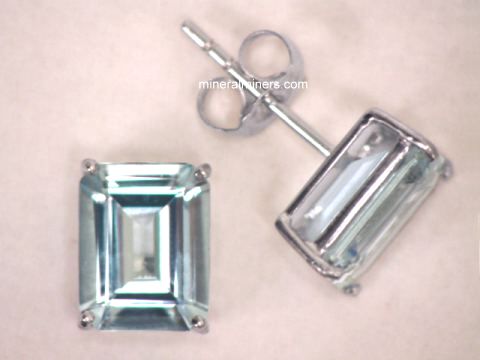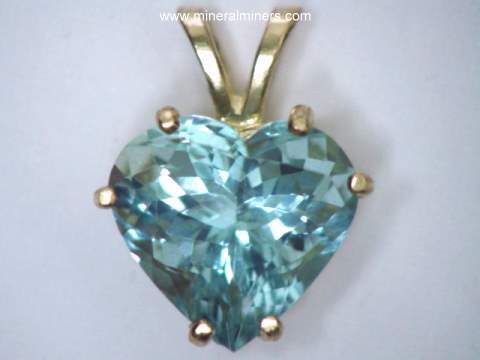Aquamarine Information and Aquamarine Products Natural Aquamarine: Enter our Virtual Gallery of Aquamarine Mineral Specimens MINERALMINERS.COM® - Your Personal 'Link' Direct to the Aquamarine Mines!TM Aquamarine is the pale green to blue beryl variety.
Aquamarine Information See each of our pages displaying genuine
Beryl (Be3Al2(Si6O18) is a
relatively common mineral
although it does contain the rare element beryllium. It is most
well known however for its gem varieties:
the light green to blue aquamarine,
the intense green emerald,
the yellowish-green to golden heliodor (also known as golden beryl),
and the light pink to salmon colored beryl variety knaon as morganite.
Beryl also occurs as the colorless gem variety goshenite, and as
the very rare red gem beryl variety bixbite.
Aquamarine Information
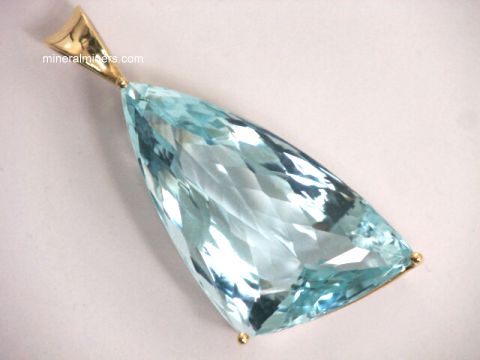
Natural Aquamarine Merchandise:
(Select any image to enter our On-Line Store)
AQUAMARINE PHYSICAL PROPERTIES
Return to the Index of Aquamarine Information Topics
BERYL (Aquamarine) BACKGROUND INFORMATION
Return to the Index of Aquamarine Information Topics

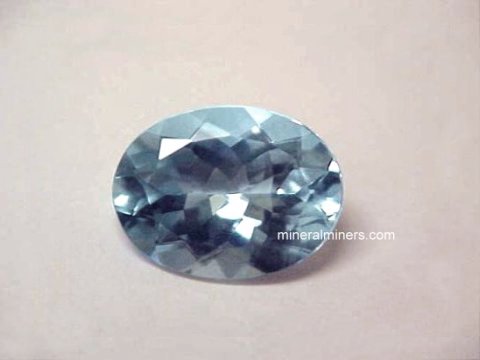
AQUAMARINE OCCURRENCE AND DIAGNOSTIC FEATURES
Aquamarine crystals (Be3Al2(Si6O18)) occur primarily in granite pegmatites and to a lesser extent in miarolitic cavities in granites, also in hydrothermal carbonate veins and greisens. Aquamarine is typically associated with quartz, albite feldspar, and muscovite, and occurs with other pegmatite accessory minerals such as biotite, smoky quartz, garnet, phenakite and topaz.
Because of aquamarine's relatively high hardness and specific gravity, it is sometimes found in eluvial and aluvial deposits.
The color of aquamarine is due to trace amounts of iron impurities in the beryl structure. The color ranges from pale green to pale blue to blue depending on the relative concentrations of Fe2+ to Fe3+ and on where the iron impurities are located within the beryl crystal structure. The beryl crystal structure contains channels outlined by rings of (Si-O)6 units. These rings are stacked upon each other leaving space within the channels for water or other impurities. Color influencing iron impurities can be present in these interstitial channel sites or substituting for aluminum in octahedral sites. When Fe3+ is present substituting for aluminum in the octahedral site a yellow color is produced. When Fe2+ is present in the interstitial channel site a pure blue color is evident. When both are present the typical blue-green color of fine aquamarine jewelry is produced. Heating a green-blue aquamarine gem to approximately 300 degrees Celcius reduces the Fe3+ to Fe2+, thereby eliminating the yellow and green colors leaving only the pure blue color that is most popular. Irradiation can reverse this process restoring the yellow and green colors.
Aquamarine is usually recognized by its hexagonal form, color and specific
gravity. Distinguished from apatite by its greater hardness.
Return to the Index of Aquamarine Information Topics
AQUAMARINE HISTORY INFORMATION AND AQUAMARINE USES
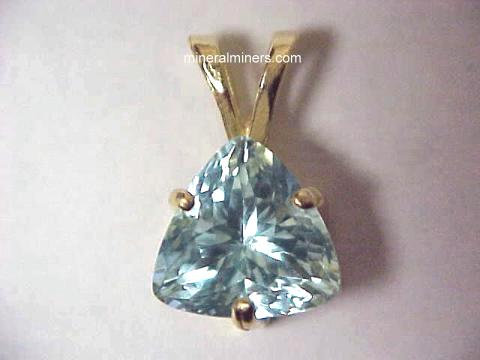
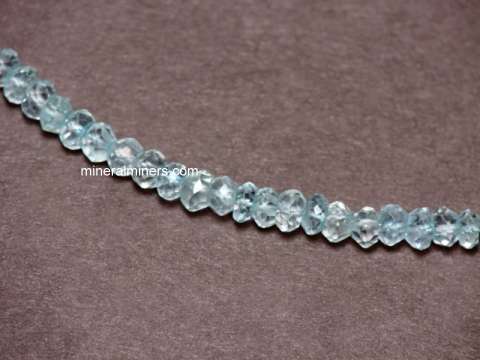
The word aquamarine is of Latin origin meaning sea water in allusion to its color.
Aquamarine is used as a gemstone.
Traditionally, aquamarine has been used as a charm by sailors for protection while at sea. It also is believed to preserve and enhance mutual love and to maintain a good marriage, and to ensure truth in relationships and business dealings.
The astrological signs of aquamarine are Pisces and Scorpio.
Aquamarine is the modern birthstone for the month of March. Aquamarine jewelry is also an optional birthstone gift
for birthdays in October.
Return to the Index of Aquamarine Information Topics
AQUAMARINE METAPHYSICAL PROPERTIES
Wearing aquamarine jewelry or holding an aquamarine crystal is said to release anger and negativity replacing them with mental peace and clarity, providing emotional and mental balance. It is also said to aid in meditation, and to give courage and to assist in self-expression.
Using natural aquamarine jewelry is said to help reduce dependence on drugs, to aid in digestion, as a remedy for swollen glands and to maintain the health of the jaws and teeth.
For more in-depth metaphysical information, see our Metaphysical Books section.
Return to the Index of Aquamarine Information Topics
Aquamarine
To see more aquamarine photos, just select another link shown below. To see photos of another mineral variety, select any link in our Mineral Inventory & Factsheet Index.
For more information about natural aquamarine and its history, physical properties, chemistry, occurance, and metaphysical uses be sure to see our aquamarine information page.
NATURAL AQUAMARINE PRODUCTS:
(Follow any link to enter our On-Line Store)
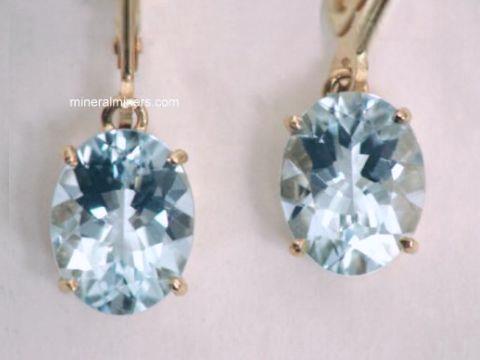
Would you like us to inform
you when we add more natural aquamarine products on this page?
We do have additional aquamarine crystals, mineral specimens, gems and jewelry items in stock, so
be sure to let us know if you have any
natural aquamarine requests. Please contact our webmaster or our 'site' geologist with any questions or comments regarding our genuine aquamarine products.
Go Up To The Top of This Aquamarine Information Page
Last Updated: May 31st, 2022
Aquamarine Jewelry, Earrings, Necklaces, Bracelets
1998-2022 Gem & Mineral Miners, Inc.®



